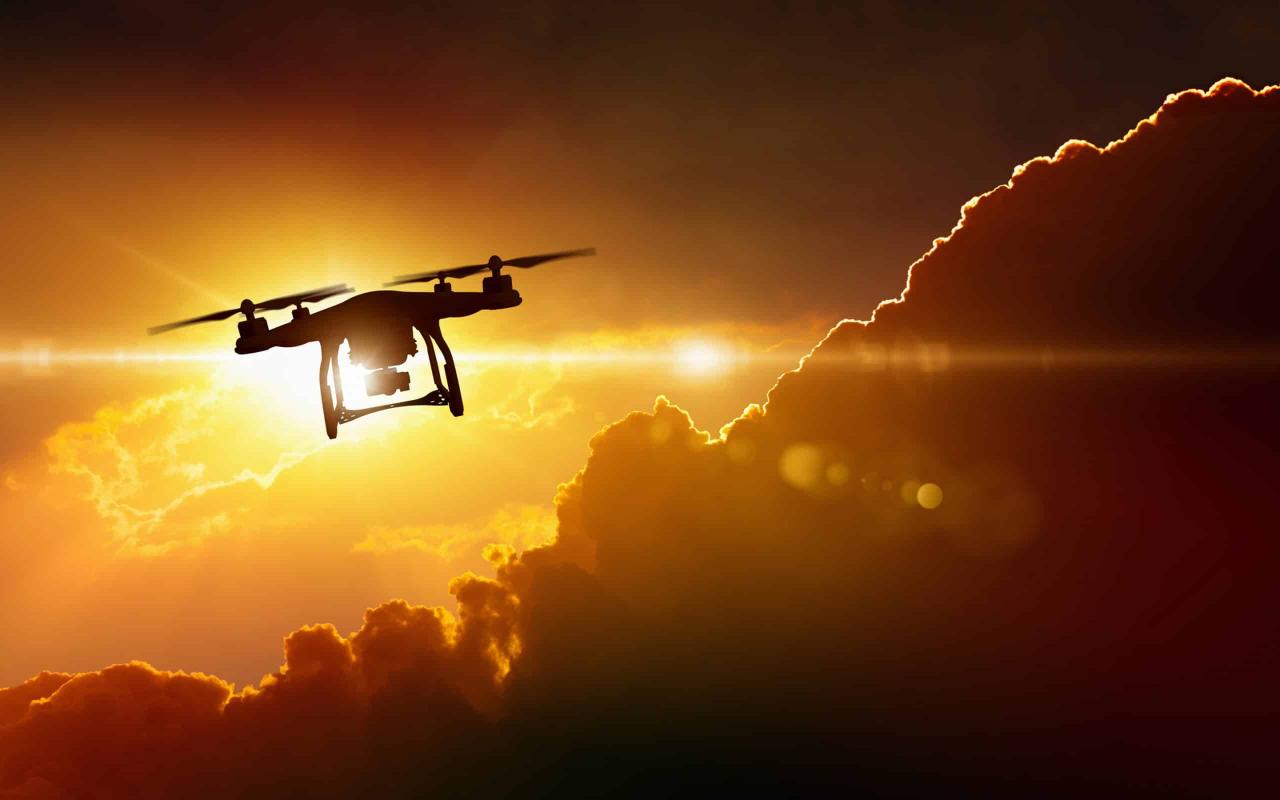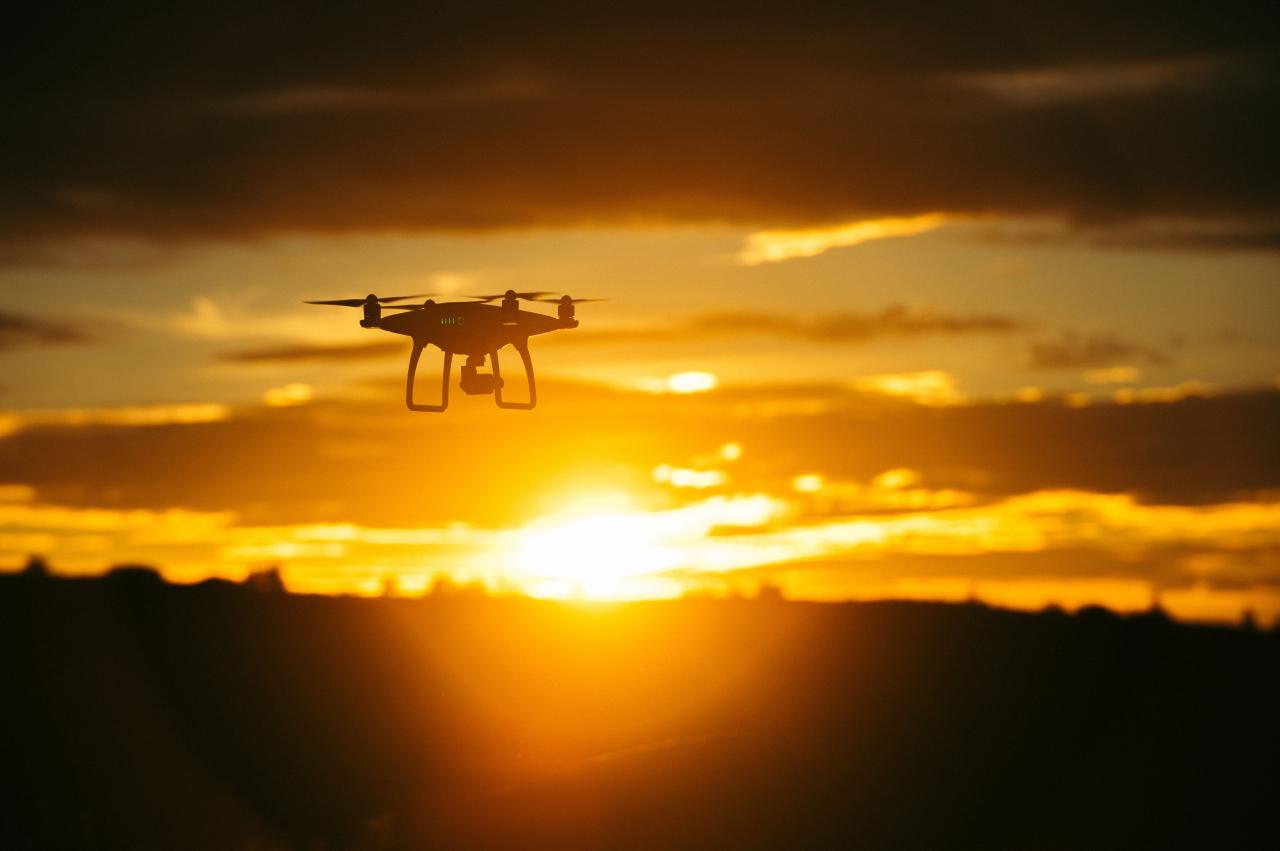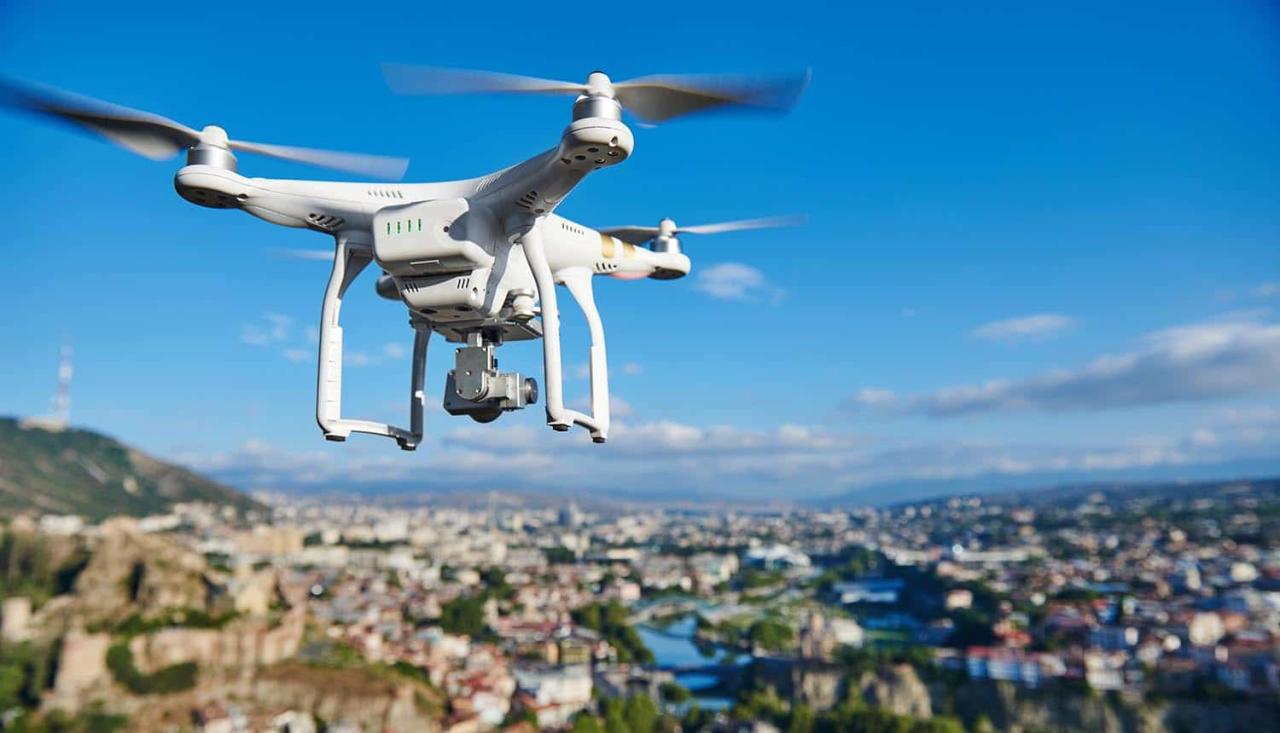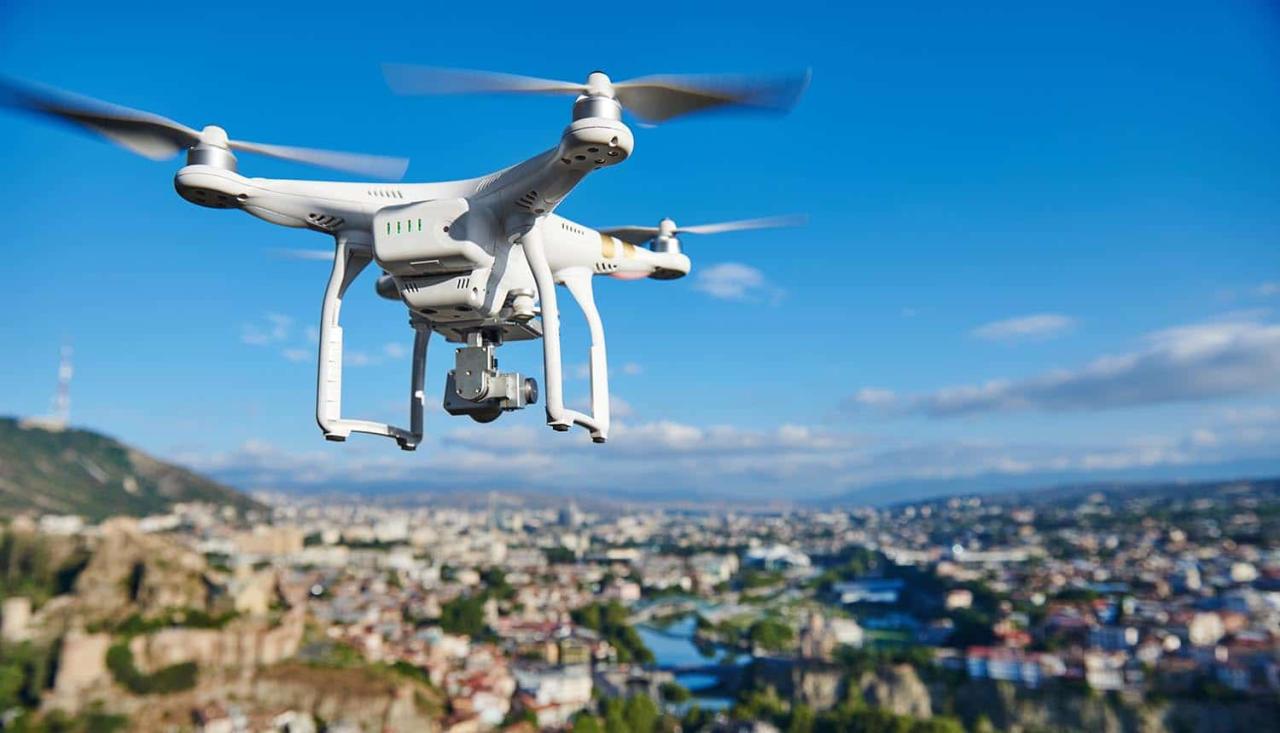Sky elements drones are revolutionizing atmospheric observation. This technology allows for unprecedented detail in studying clouds, atmospheric conditions, and light interactions, providing valuable data for environmental monitoring, weather forecasting, and scientific research. The use of drones offers a flexible and cost-effective approach to collecting atmospheric data compared to traditional methods, opening up new possibilities for understanding our atmosphere.
This exploration delves into the various aspects of utilizing drones to capture and analyze sky elements. We will examine the types of drones best suited for this purpose, the sensor technologies involved, and the challenges and advantages of this approach. Furthermore, we will discuss the diverse applications of this data, from enhancing weather prediction to studying specific atmospheric phenomena and the ethical considerations inherent in drone operation.
Sky Element Identification in Drone Footage: Sky Elements Drones
Drone footage offers a unique perspective on atmospheric conditions, capturing intricate details of the sky often missed by ground-based observations. Analyzing this footage requires understanding the visual elements present and the challenges involved in their accurate identification. This section explores the visual elements in drone sky footage, the impact of weather, identification challenges, and image processing enhancements.
Visual Elements in Drone Sky Footage
Drone footage typically captures various sky elements, including clouds (stratus, cumulus, cirrus, etc.), atmospheric haze or fog, variations in light intensity and color (due to sun angle and scattering), and potentially atmospheric phenomena like rainbows or halos. The resolution and sensor capabilities of the drone significantly influence the level of detail captured. For example, higher-resolution cameras can reveal subtle cloud textures and atmospheric gradients not visible in lower-resolution footage.
Sky elements drones are revolutionizing aerial displays, offering breathtaking possibilities for entertainment and spectacle. For a prime example of this innovative technology, consider attending the spectacular florida drone show , a truly awe-inspiring event. Witnessing these coordinated aerial performances showcases the remarkable potential of sky elements drones to create unforgettable visual experiences.
Weather Conditions and Sky Appearance
Different weather conditions dramatically alter the sky’s appearance in drone imagery. Clear skies exhibit uniform blue tones (with variations due to sun angle), while cloudy conditions show diverse cloud formations, shadows, and varying light levels. Fog or haze reduces visibility and introduces a milky or diffused appearance. Rain can create reflections and distortions, while storms produce dramatic cloud structures and potentially lightning.
The impact of weather on color and contrast is significant, influencing the analysis and interpretation of the footage.
Challenges in Accurate Sky Element Identification
Accurately identifying sky elements from drone video presents several challenges. Perspective distortion, especially at lower altitudes, can alter the appearance of clouds and atmospheric features. Variations in lighting conditions can make consistent identification difficult, and the dynamic nature of atmospheric phenomena means that conditions can change rapidly during filming. Furthermore, differentiating between similar cloud types or subtle atmospheric variations requires specialized expertise and potentially advanced image processing techniques.
Image Processing Techniques for Sky Element Visibility, Sky elements drones
Various image processing techniques can enhance the visibility of subtle sky elements in drone footage. These include contrast enhancement, sharpening filters, color correction to account for atmospheric scattering, and specialized algorithms for cloud detection and classification. For instance, using multispectral imagery allows for the detection of subtle changes in atmospheric composition or temperature that may not be visible in standard RGB imagery.
Advanced techniques like machine learning can be employed to automatically identify and classify different cloud types and atmospheric phenomena.
Drone Technology for Sky Observation
The effectiveness of drone-based sky observation hinges on the choice of drone and its sensor technology. This section compares different drone types, discusses sensor technologies, and explores the advantages and limitations of high-altitude atmospheric studies using drones.
Drone Types for Atmospheric Observation
Several drone types are suitable for atmospheric observation, each with its strengths and weaknesses. Larger, heavier-lift drones can carry more sophisticated sensors and operate for longer durations, enabling extensive data collection over larger areas. Smaller, lighter drones are more agile and easier to deploy in confined spaces but have limitations in payload capacity and flight time. Fixed-wing drones offer longer flight times and greater range but are less maneuverable than multirotor drones.
The optimal choice depends on the specific application and the desired data acquisition parameters.
Sensor Technologies for Sky Data Capture
Drones utilize various sensor technologies to capture sky data. High-resolution cameras are essential for capturing detailed images of clouds and atmospheric phenomena. Spectrometers measure the spectral composition of light, providing insights into atmospheric composition and aerosols. Thermal cameras measure temperature variations, useful for studying atmospheric layers and cloud formation. LiDAR (Light Detection and Ranging) can create 3D maps of atmospheric structures, providing valuable spatial information.
The choice of sensor depends on the specific scientific objectives of the observation.
Sky elements drones are revolutionizing aerial displays, offering breathtaking possibilities for choreographed light shows. To witness a prime example of this technology’s potential, consider attending the spectacular orlando drone show , a showcase of cutting-edge drone technology. The innovative designs and capabilities showcased there often inspire further advancements in sky elements drone applications.
Advantages and Limitations of High-Altitude Drone Studies
Drones offer advantages for high-altitude atmospheric studies, including cost-effectiveness compared to traditional methods (e.g., weather balloons), improved spatial resolution, and the ability to reach specific locations of interest. However, limitations include restricted flight times at high altitudes due to battery life, regulatory restrictions on airspace usage, and potential challenges associated with weather conditions (e.g., strong winds). Furthermore, the cost of specialized high-altitude drones and sensors can be significant.
Sky elements drones, with their advanced capabilities, are transforming aerial displays. For a spectacular example of this technology in action, check out the breathtaking visuals at the florida drone show , a truly impressive demonstration of coordinated drone flight. The innovative choreography showcased there highlights the potential of sky elements drones for large-scale entertainment and artistic expression.
Drone Specifications Comparison

| Model | Payload Capacity (kg) | Flight Time (minutes) | Image Resolution (megapixels) |
|---|---|---|---|
| DJI Matrice 300 RTK | 2.7 | 55 | 20 |
| Autel EVO II Pro | 1.0 | 40 | 48 |
| Parrot Anafi USA | 0.5 | 25 | 21 |
Applications of Drone-Based Sky Data
Drone-captured sky imagery finds numerous applications in environmental monitoring, weather forecasting, and atmospheric research. This section explores three key applications, the contribution to weather models, examples of atmospheric phenomenon studies, and a workflow for data processing and analysis.
Applications in Environmental Monitoring
- Air Quality Monitoring: Drones equipped with spectrometers can measure pollutants in the atmosphere, providing valuable data for assessing air quality and identifying pollution sources.
- Wildfire Monitoring: Drone imagery helps track wildfire spread, assess fire intensity, and guide firefighting efforts by providing real-time information on smoke plumes and fire behavior.
- Dust Storm Monitoring: Drones can monitor the movement and intensity of dust storms, providing early warnings and aiding in the mitigation of their impact on infrastructure and human health.
Drone Data and Weather Forecasting
Drone data enhances weather forecasting models by providing high-resolution observations of atmospheric conditions at various altitudes. This improves the accuracy of predictions, particularly for localized weather events like thunderstorms or microbursts. Integration of drone data with existing weather models requires careful calibration and validation, but the potential for improved prediction accuracy is significant.
Examples of Atmospheric Phenomena Studies
Drone data has been used to study various atmospheric phenomena, including the formation and evolution of clouds, the dynamics of atmospheric boundary layers, and the transport of pollutants. For instance, studies have used drone-based measurements to investigate the microphysical properties of clouds, leading to a better understanding of cloud formation and precipitation processes.
Workflow for Processing and Analyzing Drone Footage
A typical workflow for processing and analyzing drone footage for sky data involves several steps: data acquisition (flight planning and image capture), data preprocessing (georeferencing, image correction), feature extraction (cloud identification, atmospheric parameter estimation), data analysis (statistical analysis, pattern recognition), and data visualization (maps, charts, 3D models). Each step requires specific software and techniques, often involving specialized image processing and data analysis tools.
Data Visualization and Interpretation of Sky Elements
Effective visualization and interpretation of drone-captured sky data are crucial for extracting meaningful insights. This section discusses visualization techniques, data organization for statistical analysis, pattern identification, and interpreting visual patterns in the sky.
Data Visualization Techniques
Drone sky data can be visualized using various techniques, including 2D maps showing cloud cover and atmospheric parameters, 3D models illustrating cloud structures and atmospheric layers, and time-lapse videos demonstrating the evolution of atmospheric phenomena. Color-coded maps can represent different atmospheric variables, while animations can highlight dynamic changes over time. The choice of visualization technique depends on the specific data and the intended audience.
Data Organization for Statistical Analysis
Organizing drone sky data for statistical analysis requires structuring the data in a tabular format with appropriate metadata. This includes information on the time and location of each measurement, the sensor used, and any relevant environmental parameters. This organized data can then be used to perform statistical analyses to identify trends, correlations, and anomalies.
Identifying Patterns and Anomalies in Sky Data
Identifying patterns and anomalies in drone sky data involves employing statistical methods and machine learning algorithms. Statistical techniques can identify correlations between different atmospheric variables, while machine learning can be used to detect unusual patterns or events. For example, anomaly detection algorithms can be used to identify unusual cloud formations or atmospheric disturbances that might indicate developing weather systems.
Interpreting Visual Patterns in the Sky
- Cloud Formations: Different cloud formations (e.g., cumulonimbus indicating thunderstorms, lenticular clouds suggesting strong winds aloft) provide clues about atmospheric conditions.
- Atmospheric Distortions: Heat haze or mirages indicate temperature gradients in the atmosphere, while atmospheric scattering patterns can provide information on aerosol concentrations.
- Light Variations: Changes in light intensity and color can indicate the presence of clouds, aerosols, or other atmospheric phenomena.
Ethical and Legal Considerations

The use of drones for sky observation raises ethical and legal concerns. This section addresses legal restrictions, ethical implications, potential risks, and best practices for responsible drone operation.
Legal Restrictions and Regulations
Drone operation is subject to various legal restrictions and regulations that vary by country and region. These regulations cover aspects such as airspace restrictions, flight permits, and data privacy. Operators must comply with all applicable laws and regulations to ensure legal and safe operation.
Ethical Implications of Drone Sky Observation
Ethical considerations include data privacy, responsible data handling, and potential environmental impacts. Data privacy concerns arise when collecting imagery near populated areas, and responsible data handling involves securing and managing the collected data appropriately. Potential environmental impacts can include disturbing wildlife or causing interference with other aircraft.
Potential Risks and Mitigation Strategies
Potential risks associated with drone-based sky data acquisition include drone malfunction, collisions with other aircraft, and data loss. Mitigation strategies include thorough pre-flight checks, adhering to safety guidelines, employing redundant systems, and implementing robust data backup procedures.
Best Practices for Responsible Drone Operation

- Obtain necessary permits and approvals before operating.
- Conduct thorough pre-flight checks to ensure the drone is in optimal condition.
- Adhere to all applicable airspace restrictions and regulations.
- Maintain visual line of sight with the drone at all times (unless operating under specific exemptions).
- Respect the privacy of individuals and avoid capturing images of private property without permission.
- Implement robust data backup and security procedures to prevent data loss.
- Fly responsibly and avoid causing disruption to other aircraft or wildlife.
In conclusion, the integration of drones into atmospheric observation represents a significant advancement in our ability to understand and monitor the sky. The data acquired through drone-based sky observation offers invaluable insights across multiple scientific disciplines and contributes to improved environmental monitoring and weather forecasting. While ethical and legal considerations must be carefully addressed, the potential benefits of this technology are undeniable and promise continued advancements in our understanding of atmospheric processes.
FAQ Summary
What are the limitations of using drones for high-altitude atmospheric studies?
Limitations include flight time restrictions, payload capacity constraints, and susceptibility to adverse weather conditions. High altitudes also present challenges related to signal strength and communication with the drone.
How much does a drone suitable for sky observation cost?
The cost varies greatly depending on the drone’s capabilities (payload, flight time, resolution). Prices can range from a few hundred dollars for basic models to tens of thousands for highly specialized systems.
What safety precautions are essential when operating drones for sky observation?
Essential precautions include obtaining necessary permits and licenses, adhering to airspace regulations, ensuring proper battery management, and conducting pre-flight checks. Always maintain visual line of sight and be aware of potential hazards.
